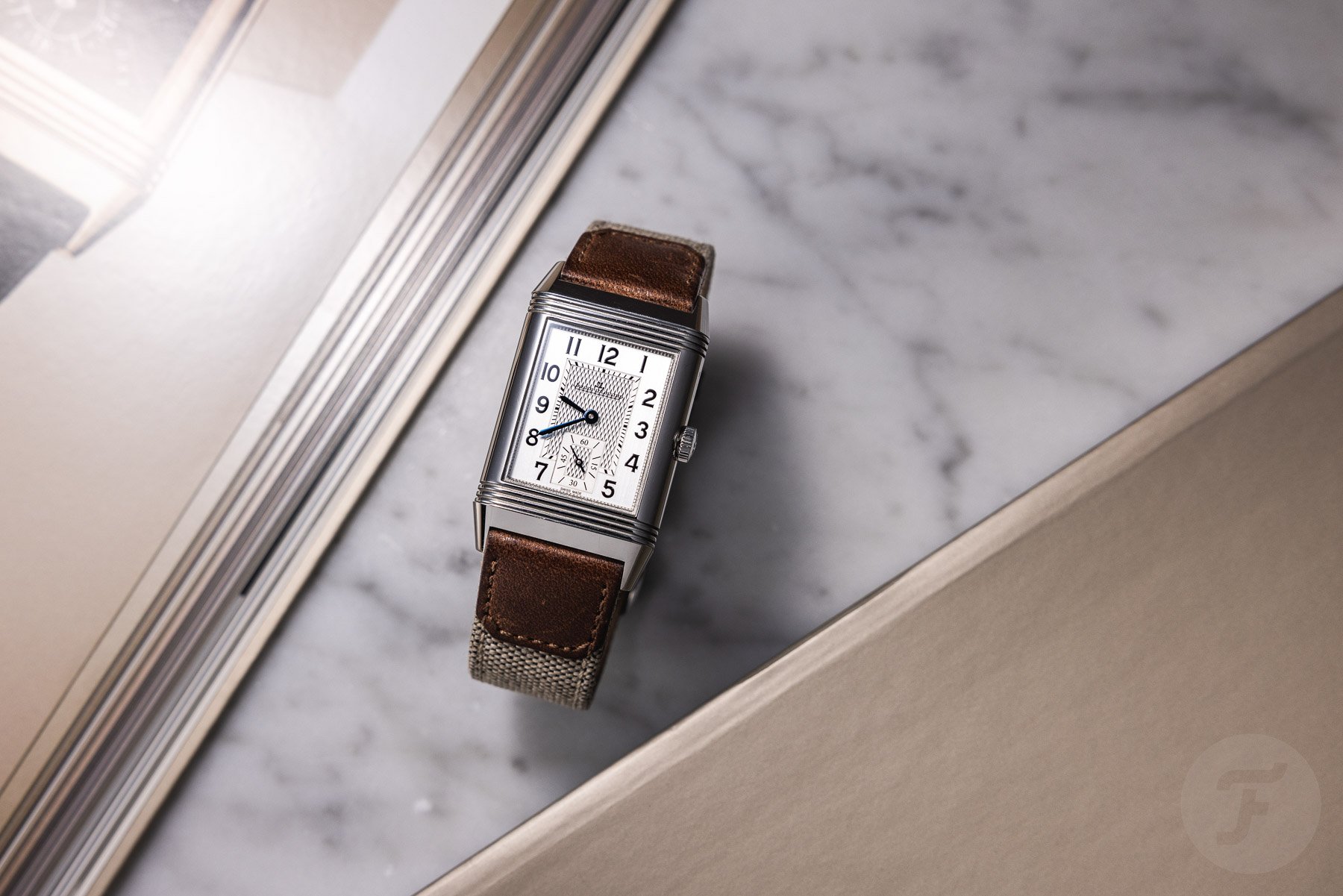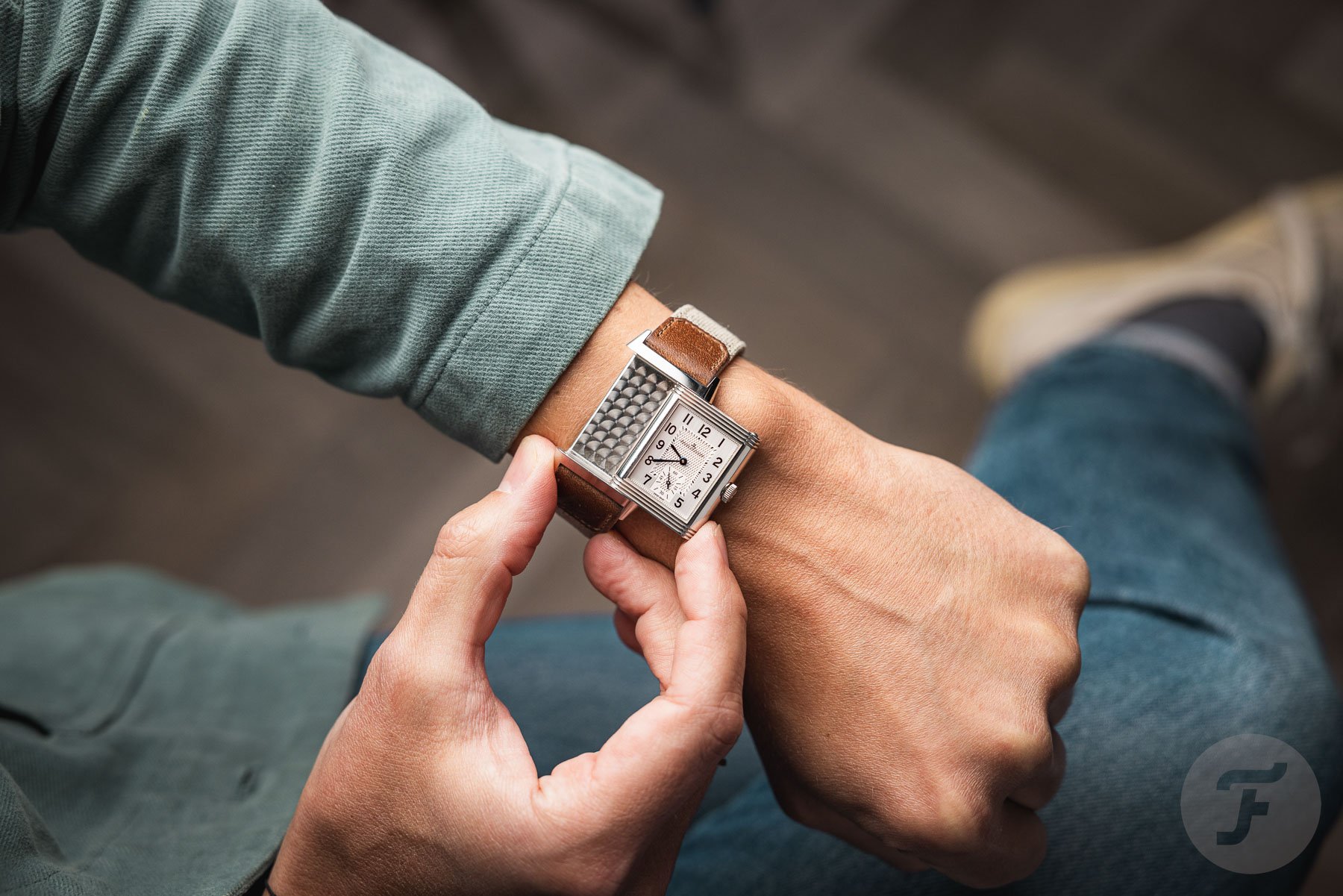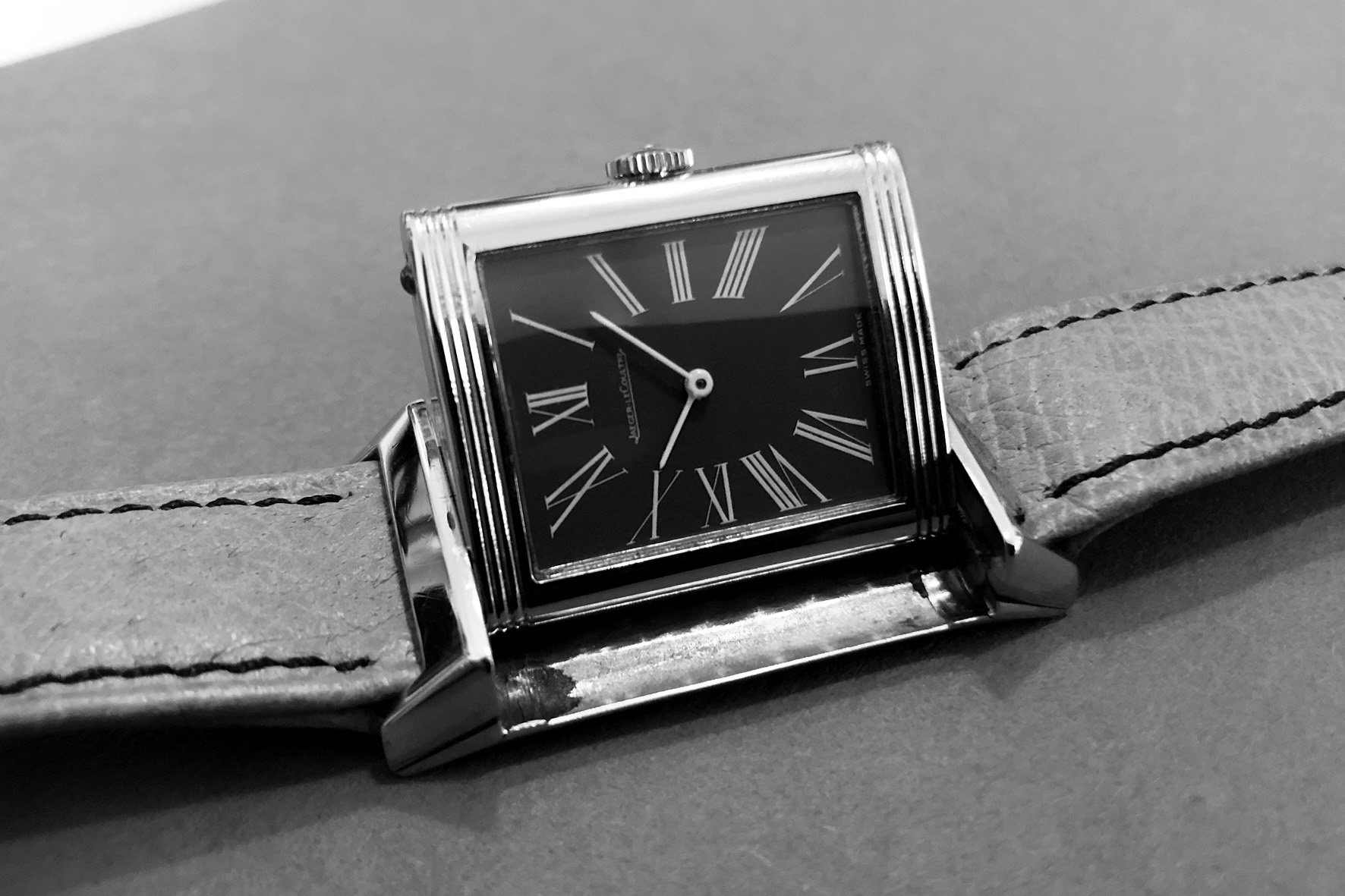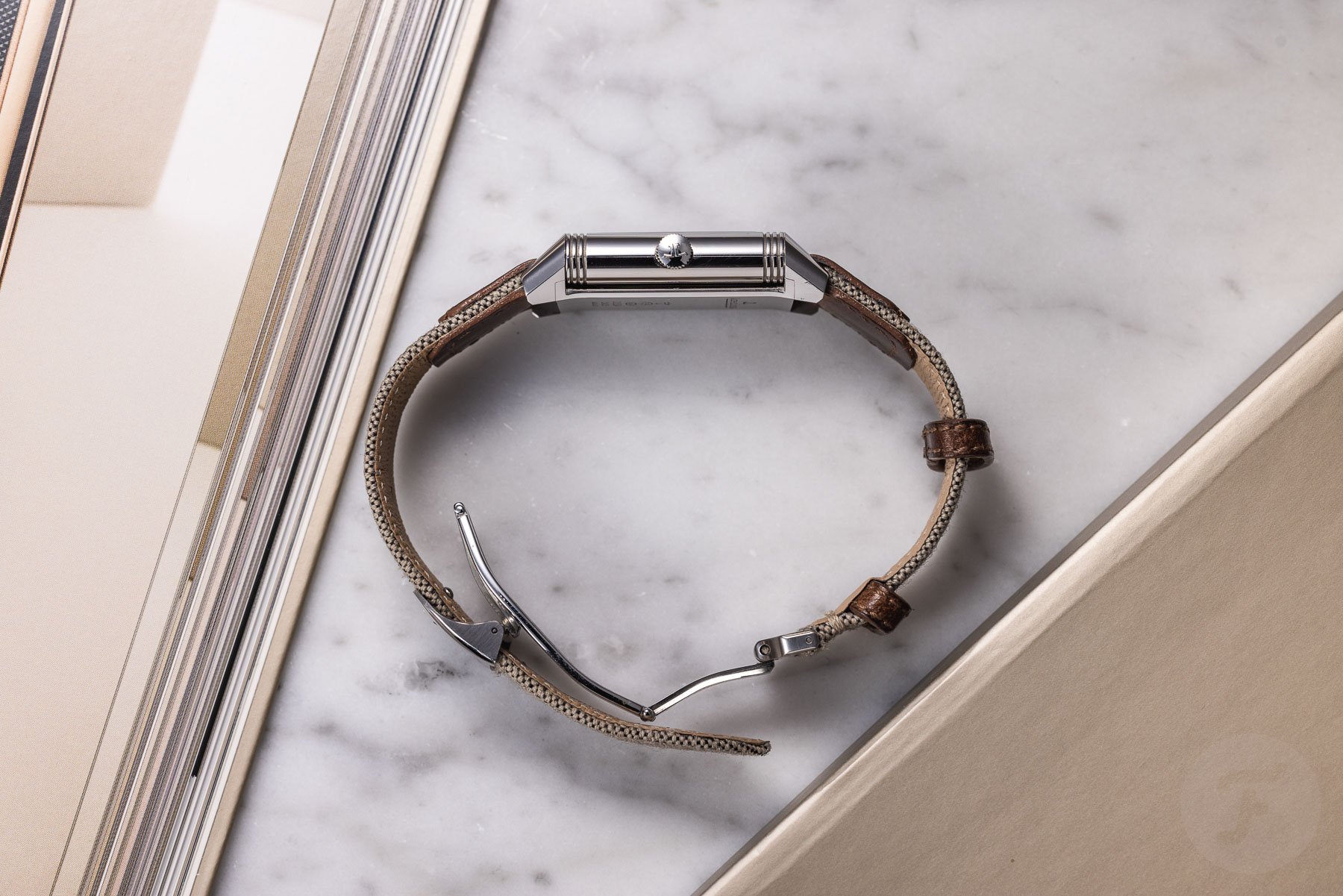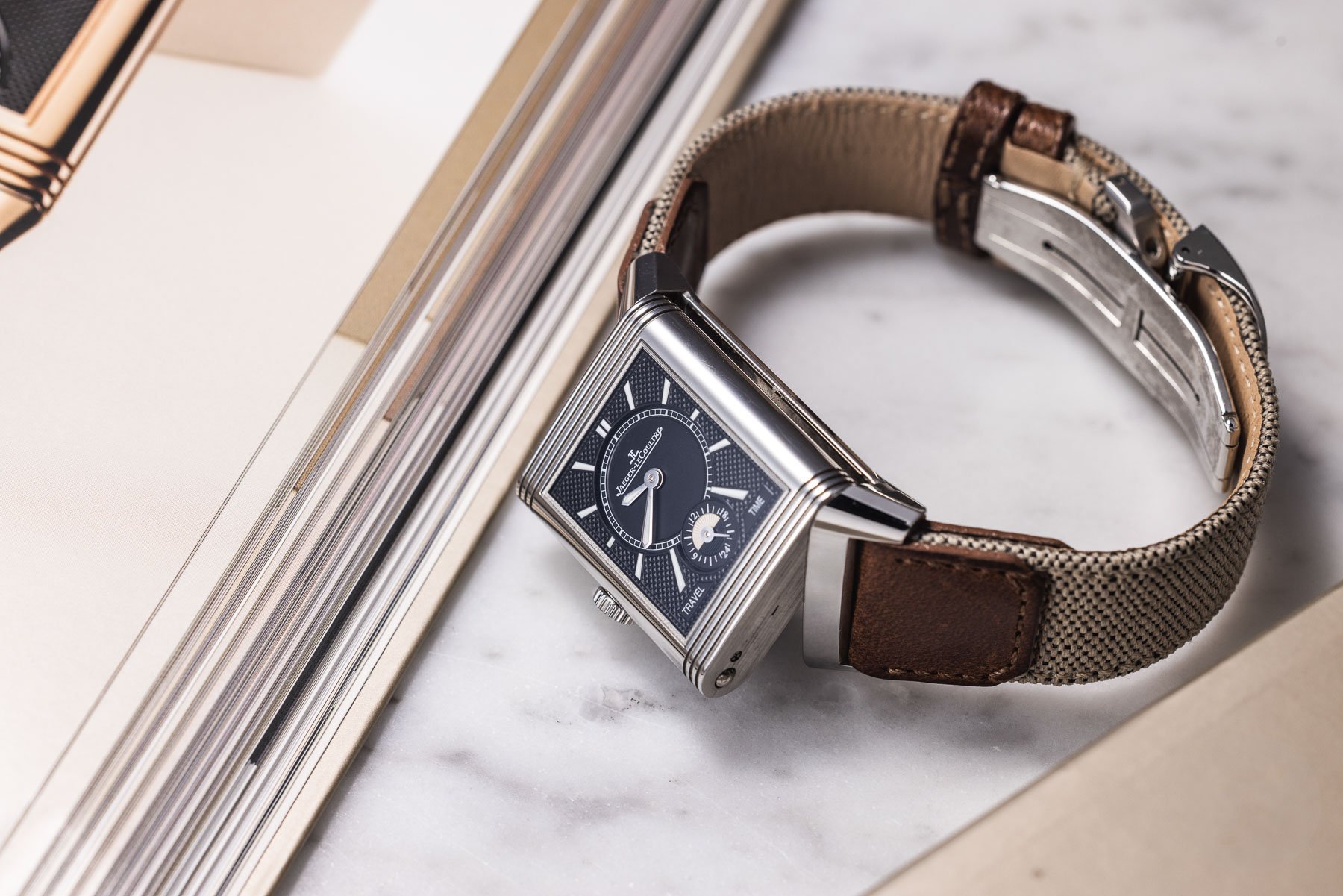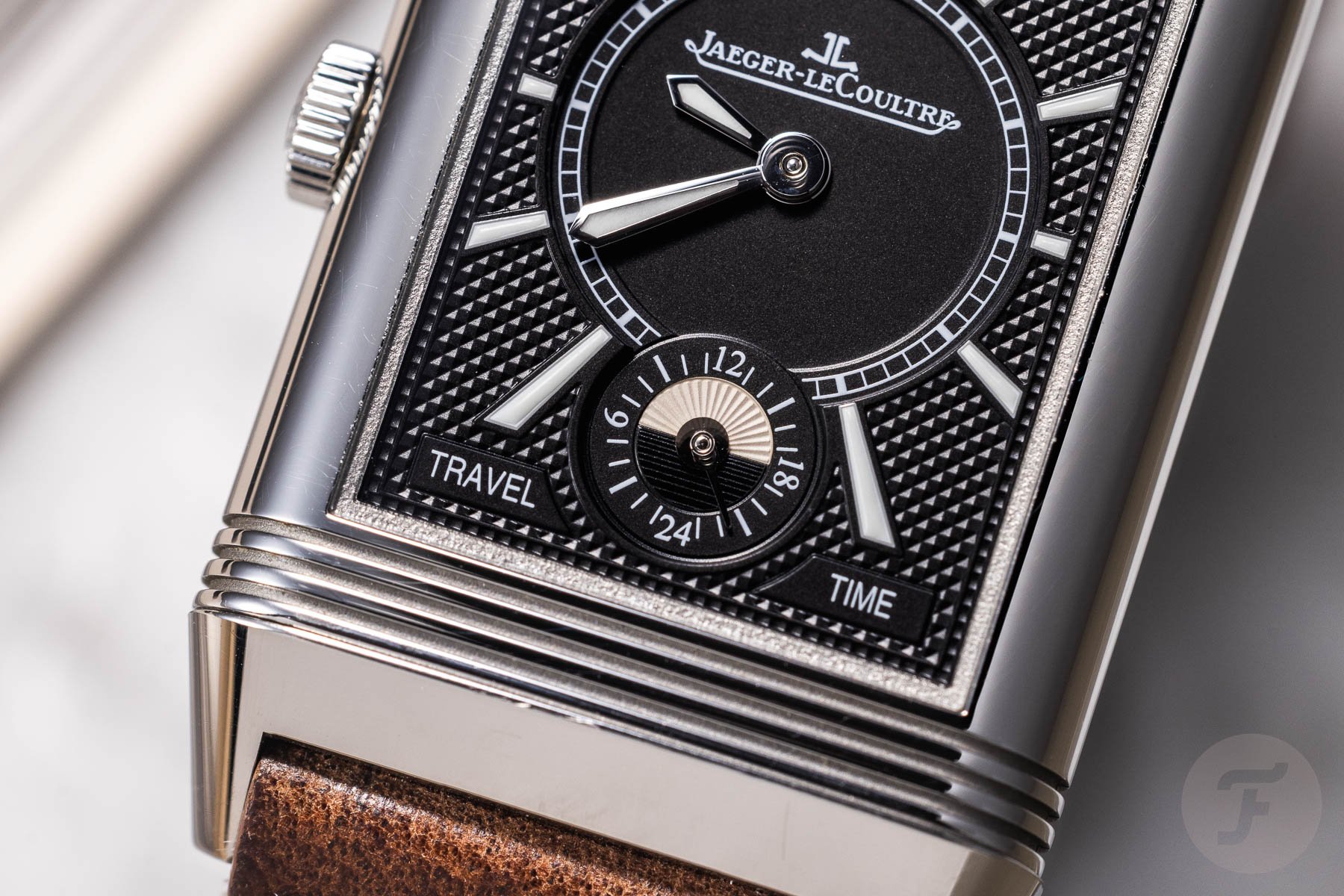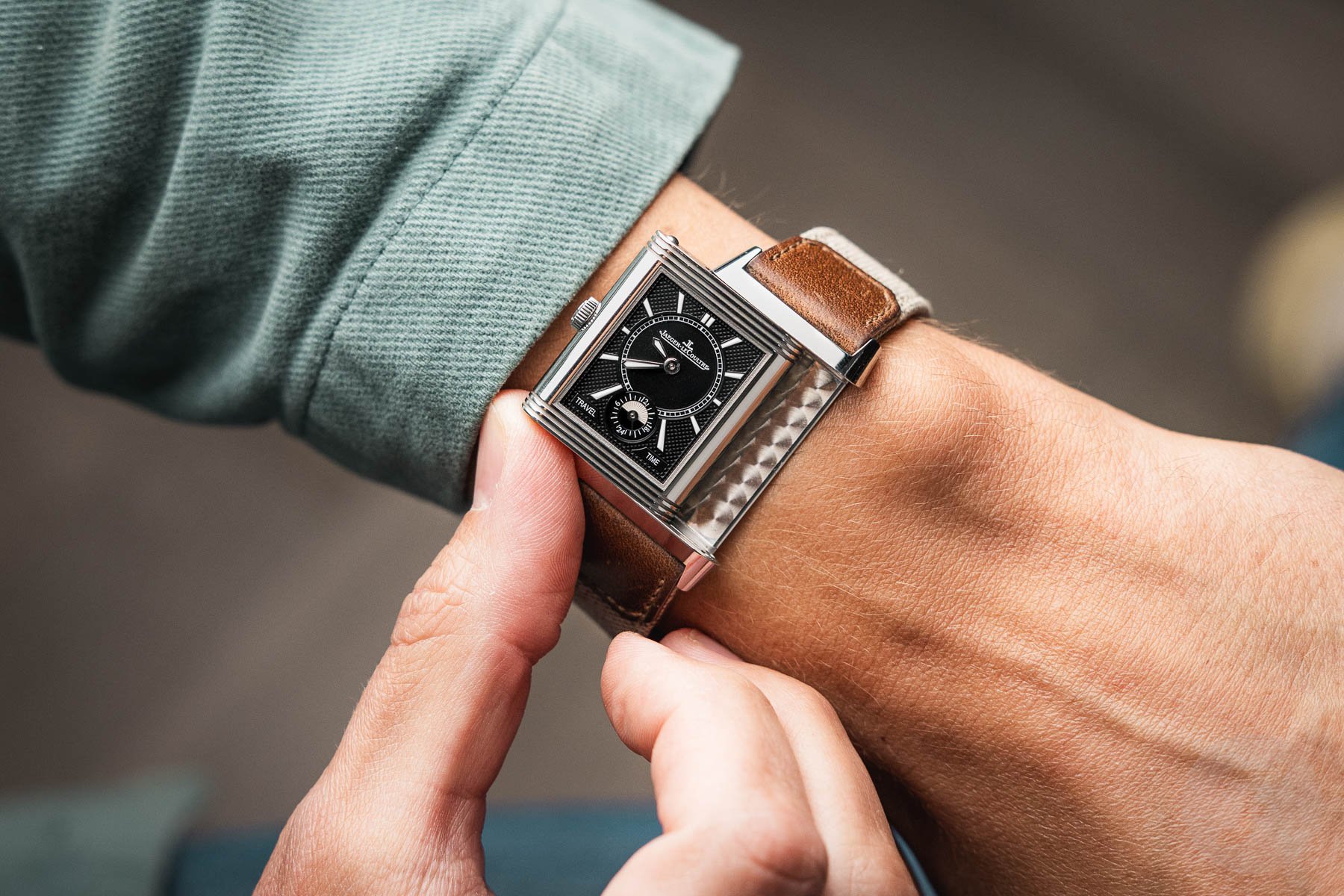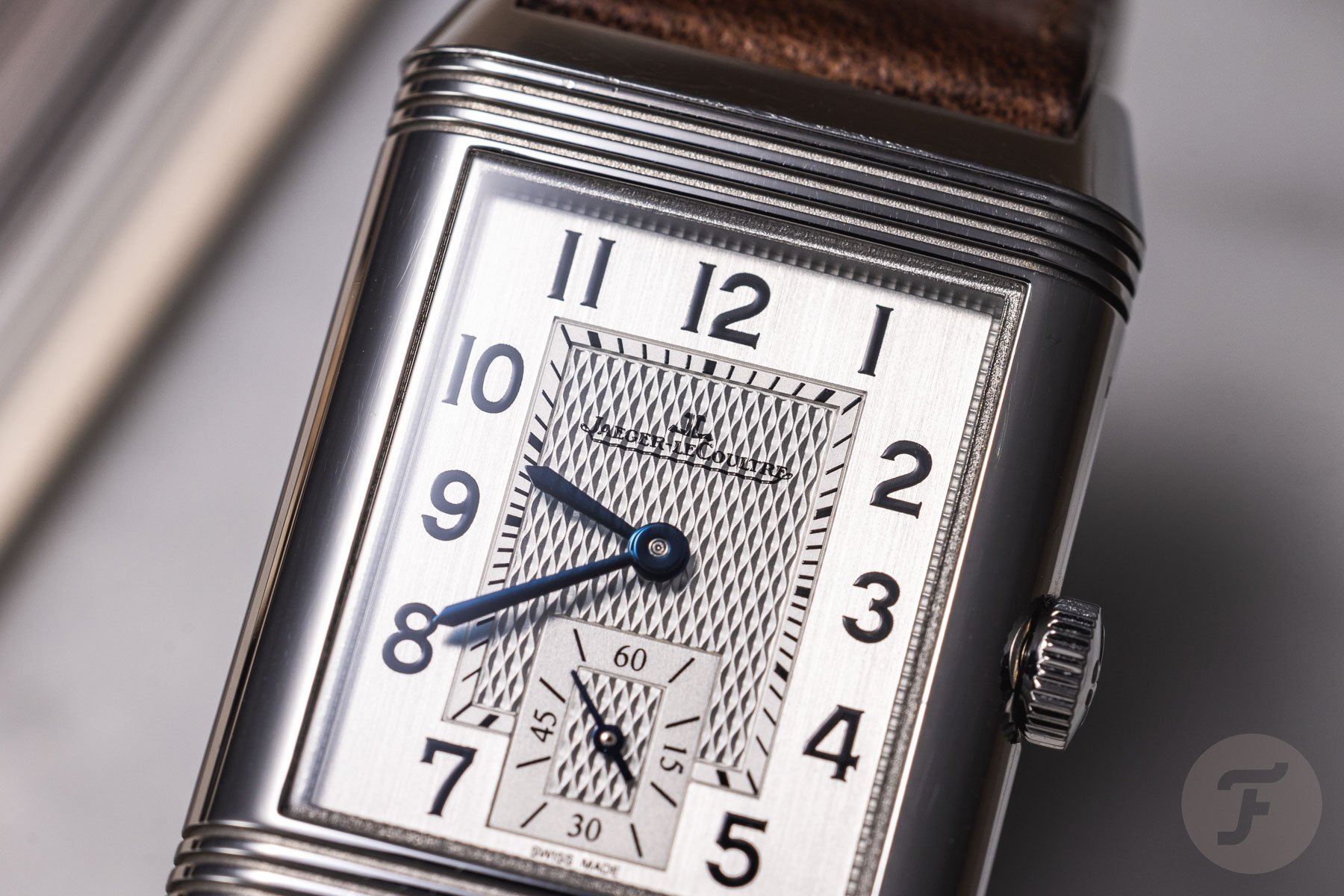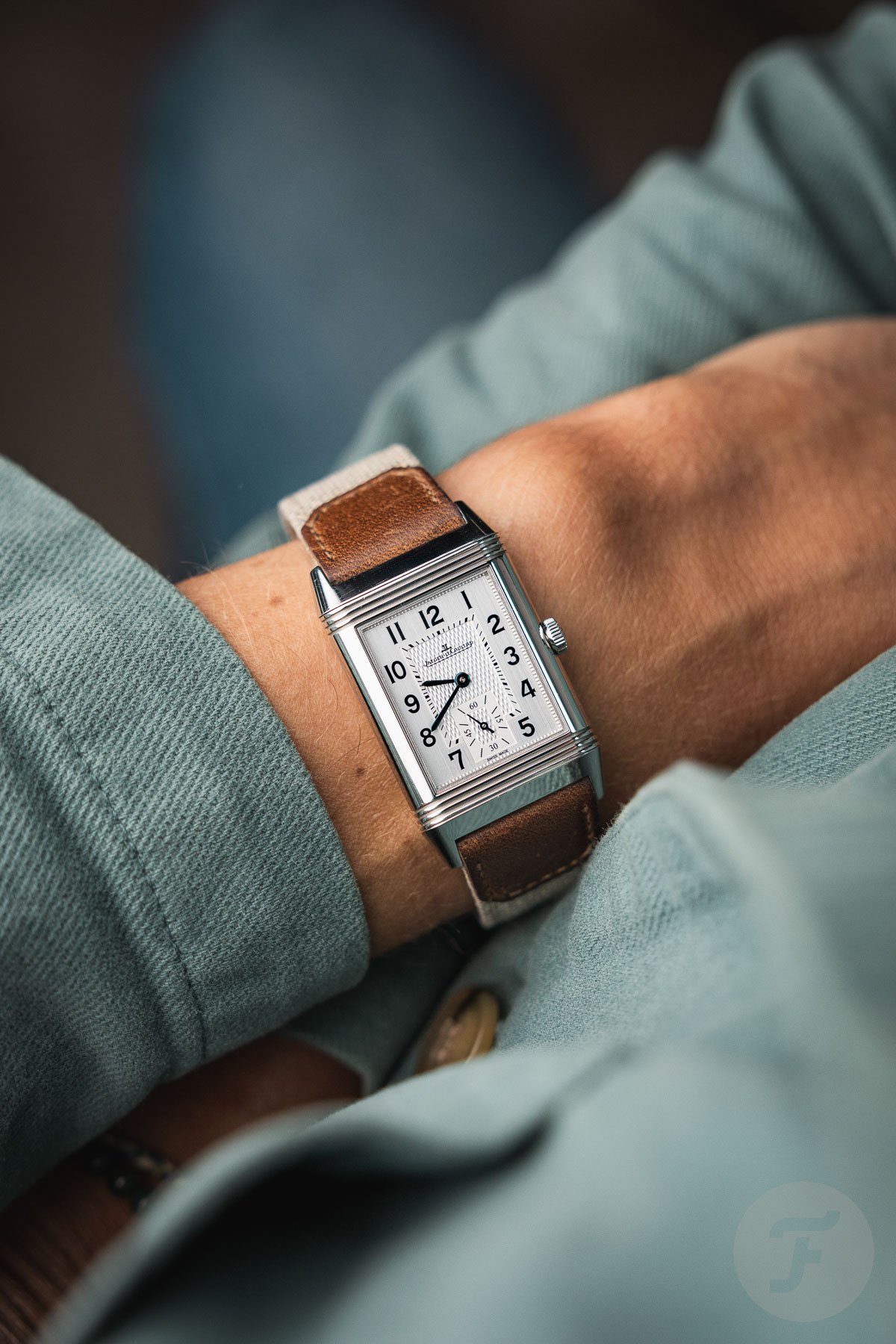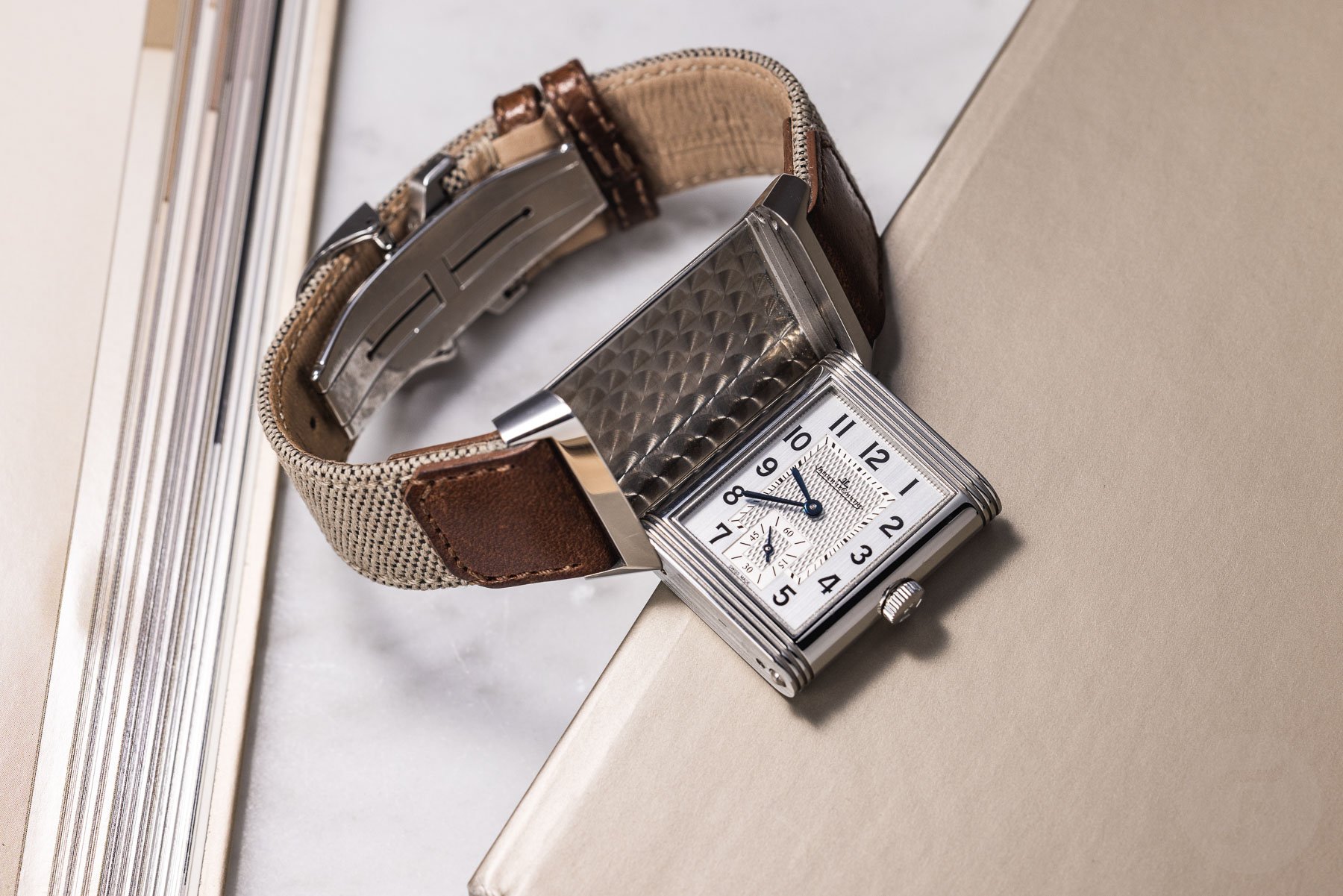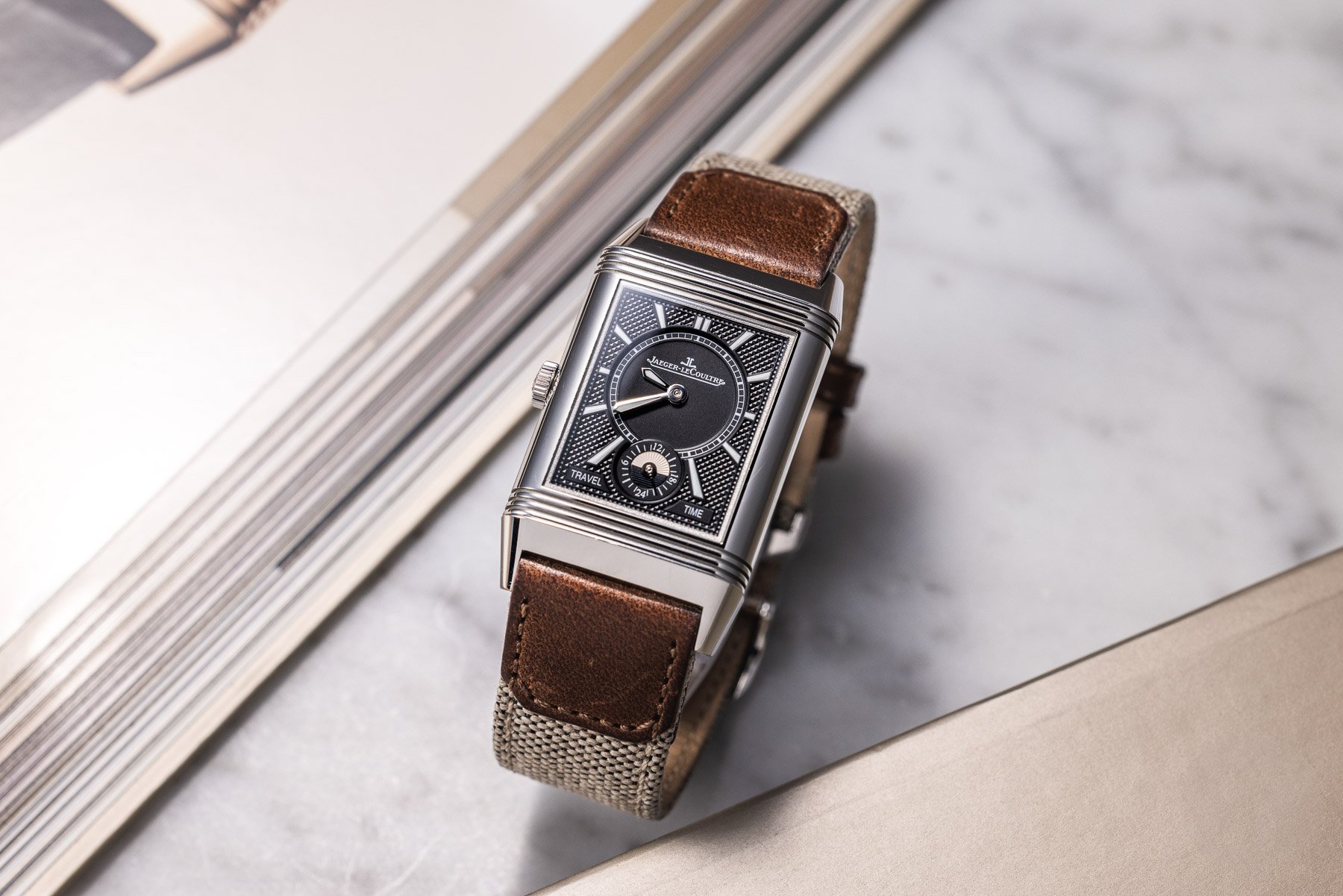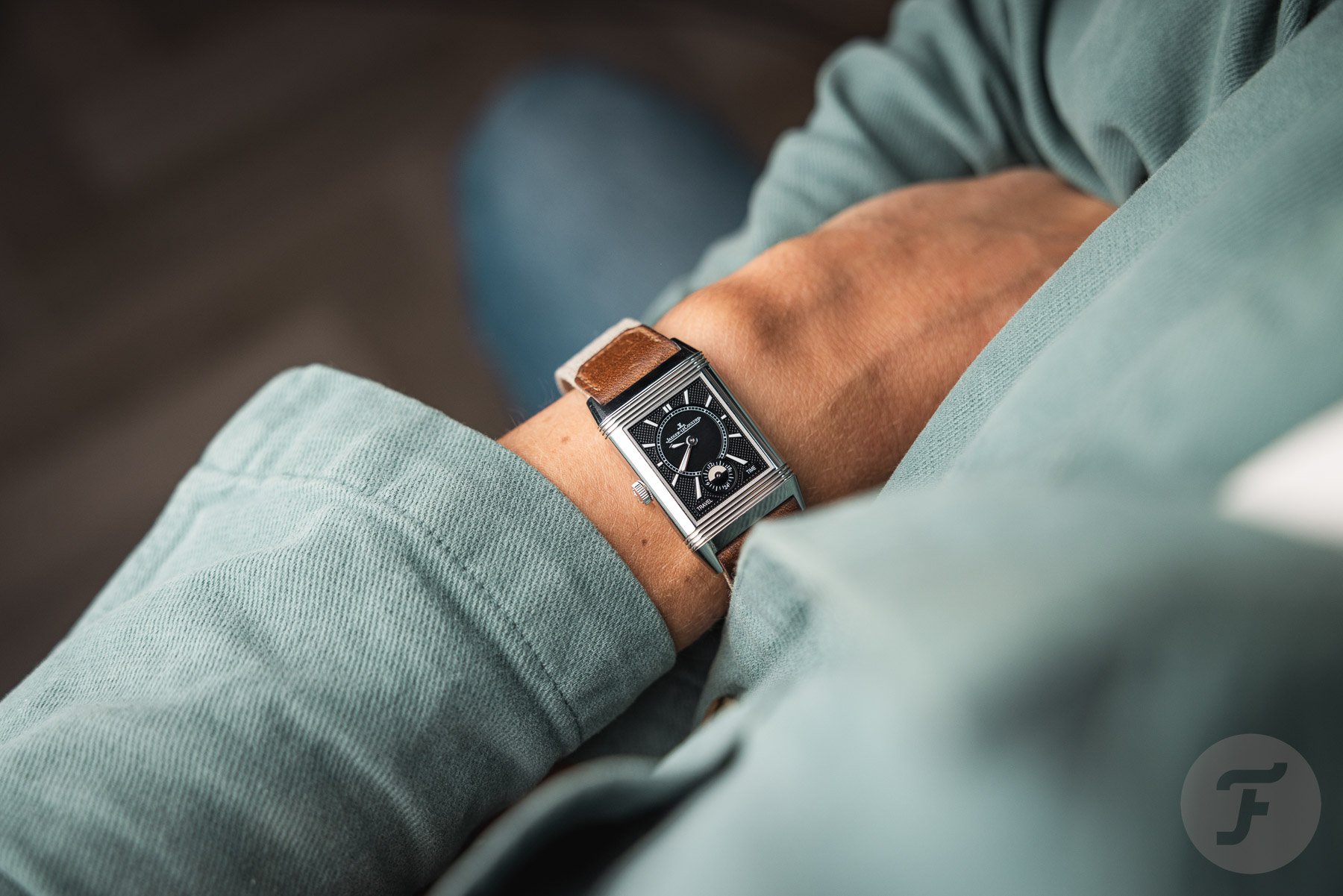Exploring Evergreens: The Jaeger-LeCoultre Reverso Duoface
In this series called Exploring Evergreens, we review watches that have been around for over a decade — or long enough to feel ubiquitous — and ask ourselves whether they have managed to stand the test of time. We’ll address whether they’re still relevant, how they feel today, and, ultimately, if they’re worth their current prices. In some cases, when the authors own/have owned the specific pieces, they’ll dig into how their feelings about them have evolved and whether or not they still deserve a spot in their collections. We’ll cover anything from truly timeless and budget-friendly classics to vintage and neo-vintage heavy hitters. Today, it’s Daan’s turn again with his Jaeger-LeCoultre Reverso Classic Medium Duoface ref. Q2458422.
I know, I know… This particular Reverso reference was only introduced in 2017 during SIHH. That means it’s not technically a classic yet, even though it does have that word in its name. Then again, apart from its second dial, its design isn’t all that different from that very first Reverso from 1931. Also, the Duoface models have been around since 1994, meaning they have a 30-year history of their own too. So please let me take the liberty to use my Reverso Duoface as a starting point for today’s episode of Exploring Evergreens. I’ll first go over the Reverso’s history briefly, and then I’ll talk about its dimensions, its calibers, and finally, its value and relevance in today’s world.
The story of the Jaeger-LeCoultre Reverso
The history of the Reverso began in 1930 with a watch enthusiast and entrepreneur named César de Trey. That year, he visited India and saw that British officers needed a sturdy watch that could survive the polo games they played in their spare time. When he returned to his home country of Switzerland, he asked his friend Jacques-David LeCoultre III if he could help him out. Together, they asked Réne-Alfred Chavot to design a watch specifically for those British officers. That’s when the idea of the Reverso with its swiveling case was born.
In 1931, Chavot patented his design. Shortly after, De Trey bought the patent from him. Together with LeCoultre and Frenchman Edmond Jaeger, he developed and sold the first Reverso watches. The model was a great success, but in 1948, it was discontinued because its rectangular shape had fallen out of fashion. Jaeger-LeCoultre (JLC) fully stopped its production and never even thought of bringing it back to life.
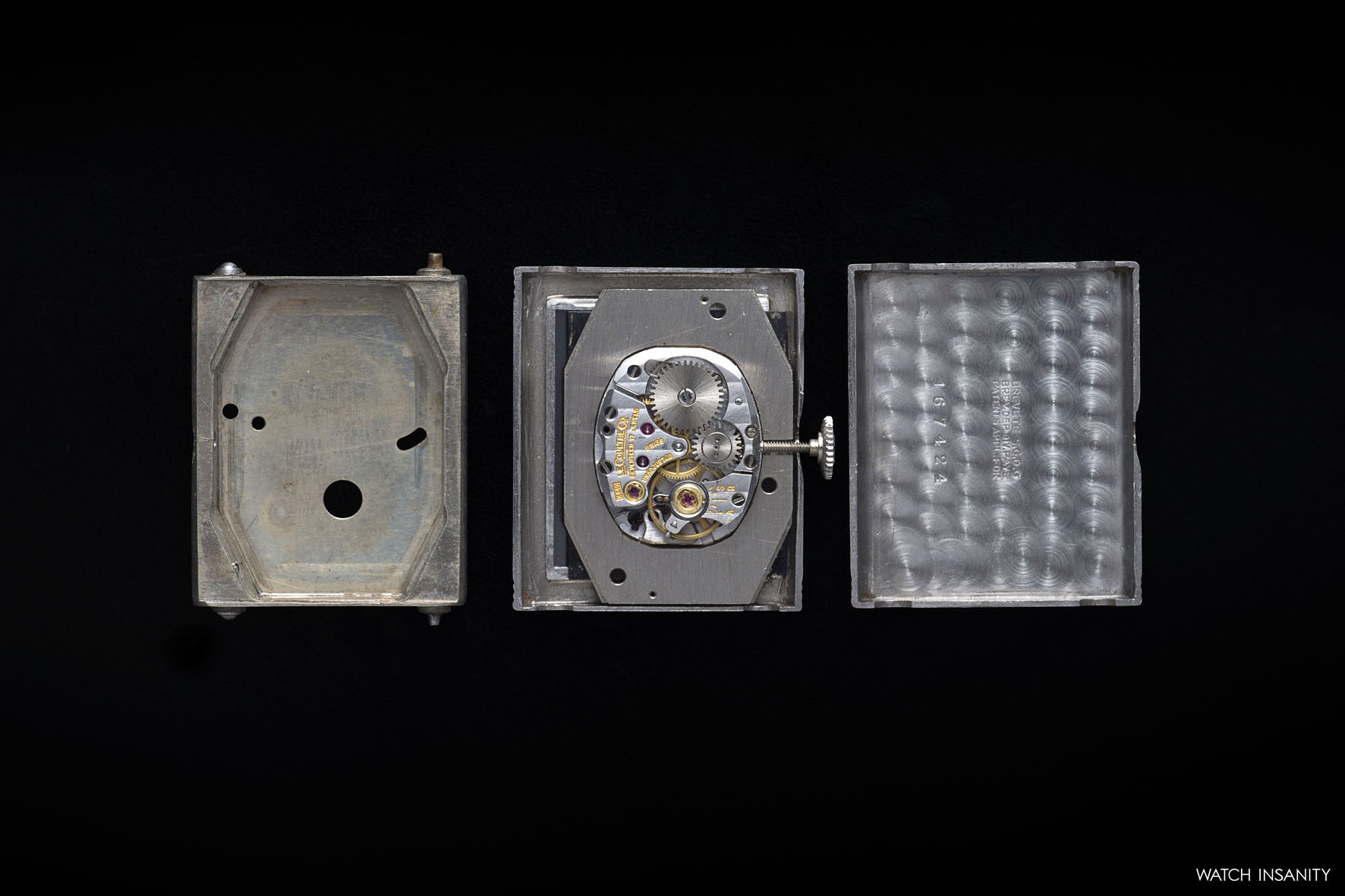
The solution Giorgio Corvo and his watchmakers came up with in the ’70s. Make sure to check out the full story on WatchInsanity.it
The Corvo comeback
That’s until Giorgio Corvo, founder of Corvo & C. in Milan in 1960 and JLC distributor in Italy, visited the manufacture in the early ’70s. There, he pulled open a drawer, and in it were 200 unused Staybrite steel Reverso cases from the 1930s or early ’40s. He immediately told JLC’s commercial director that it was exactly the watch he needed in his market. Unfortunately, the people at JLC weren’t convinced. It would be too costly to develop a new movement for it, and besides, they were in the middle of the Quartz Crisis.
Corvo convinced them to let him take one of the cases with him back to Italy. Together with his watchmakers, who worked in his after-sales service center, he came up with a way to fit an existing movement inside. With that solution, he went back to the manufacture. JLC then replicated his technique on the rest of the 199 cases, and Corvo sold the watches in no time. Motivated by this success, JLC restarted the production of the Reverso in 1975.
More sizes and complications
The so-called “Corvo Reverso” models measured 38mm long and 23mm wide. However, as the Reverso’s popularity picked up in the 1980s, JLC introduced the 42 × 26mm Grande Taille model, which propelled the watch’s success well into the 1990s. These days, based on the filters on JLC’s website, there are now 12 different sizes available. However, the difference between some of them is minuscule. In general, you can subdivide them into XS, S, M, L, and XL. Which size is right for you is very personal and also depends on whether you go for a Mono- or Duoface version. In my six-month review, I explained in depth why I chose the medium Duoface model for my 17cm wrist.
For the Reverso’s 60th anniversary in 1991, JLC started to fit the Reverso with additional complications. The first ones were a power reserve indicator and a date window. In 1994, the first Reverso Duoface came out. Nowadays, you can get a Reverso not only in many sizes but also with almost any possible complication. There are models with a minute repeater, a perpetual calendar, a chronograph complication, a tourbillon, and the list goes on.
Caliber 854(A/2)
For today’s exploration, though, I’ll limit myself to the Duoface complication. That first 1994 Reverso Duoface housed a hand-wound caliber 854. Just like today’s Reverso Duoface, it had the time in hours, minutes, and sub-seconds on one side and a second time zone and 24-hour sub-dial on the other. The second time zone had to be set by pushing a sharp object onto an inset button above the crown on the side of the case.
My Reverso Duoface, which is the current model, is powered by caliber 854A/2. This movement has the same functions, also runs at a 21,600vph frequency, and has a power reserve of 42 hours. But instead of 180 parts, it has 160, and it also has two fewer jewels, at 19. In addition, the time-zone button changed into a slider and moved to the top of the swiveling module. This means that it’s hidden when the module is clicked in place, giving the case a cleaner look.
The JLC Reverso’s value
Apart from the sizing, I also discussed my experience with my Reverso in detail in my six-month review. I’ve now owned the watch for almost two years, and I still very much stand by what I wrote down back then. So, if you’re curious, make sure to check that review out.
However, what I haven’t touched upon yet is the watch’s current value. When I bought the watch, I believe its list price was somewhere between €8,000 and €9,000. At the time, I got a discount, so I got it for less than €8,000. For me, it was and still is the most expensive watch I’ve ever bought. And since I bought it, it has only become more and more expensive.
Right now, the same reference retails for €14,300. That’s what you call a serious price increase by JLC. When I bought it, its value was estimated at €7,847 by Chrono24 — right now, only two years later, it’s at €11,629. I don’t feel this last number is a realistic value, though, as it has just gone up because of the retail price increases, not because the Reverso has seen a boom in popularity.
Want a Reverso? Get one pre-owned
So, is the Reverso still a relevant watch today? Well, to me, it is. It’s such a nice watch to wear, especially on those Fagliano straps. In addition, it’s very different from most other watches, which makes wearing one a unique experience. However, with this recent and steep price increase in mind, I can’t honestly recommend that anyone buy a Reverso at a boutique right now.
What you can do, though, is take a look at a pre-owned Reverso. Those were probably bought at much lower prices than the current ones and will, therefore, also sell for less on the secondary market. In the Fratello office, we sometimes browse Chrono24, looking for nice Reversos. What’s cool is that you can also find great examples in precious metals for well under €10,000.
Let me know what you think of the Jaeger-LeCoultre Reverso. Do you prefer the Duoface like I do, are you a Monoface fan, or would you go for one of the higher-end, more complicated models? Sound off in the comments.

